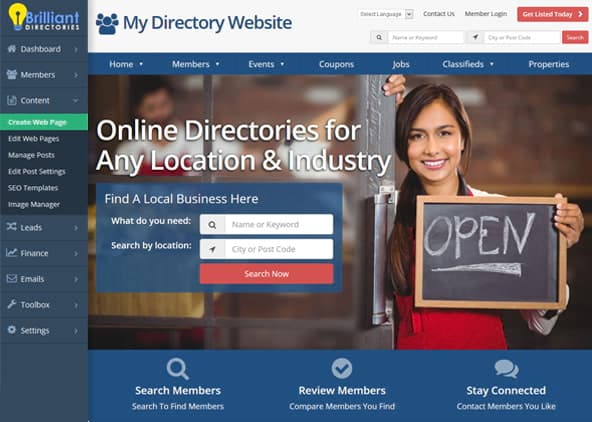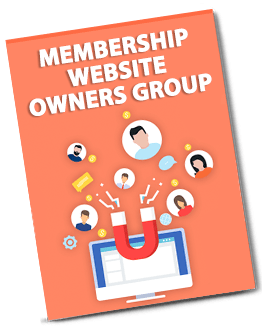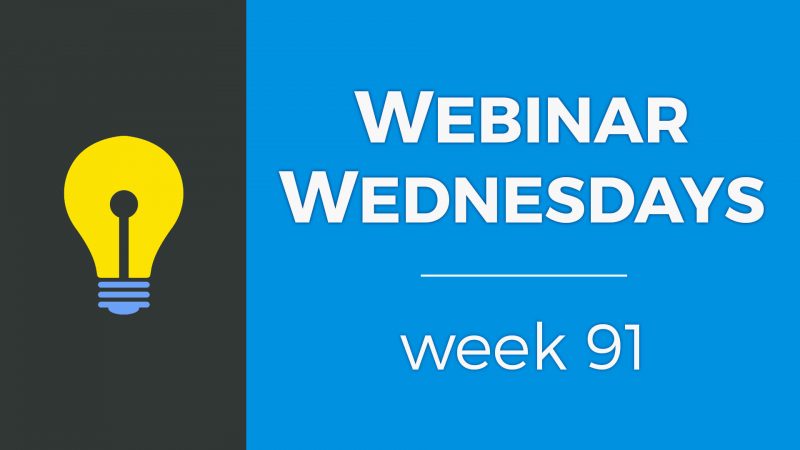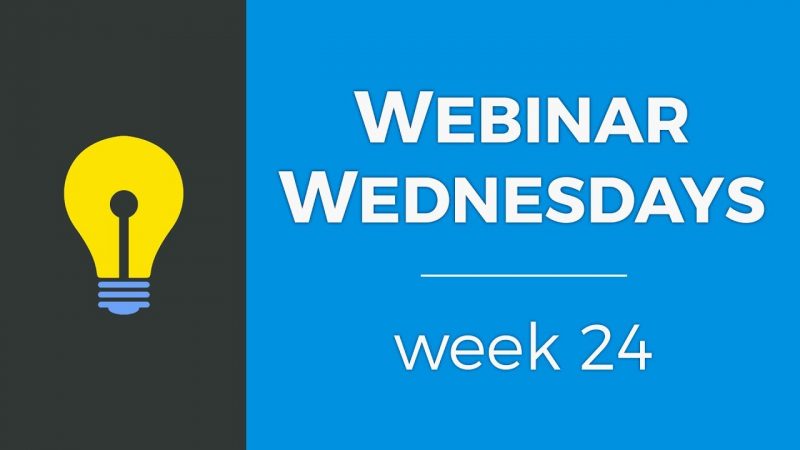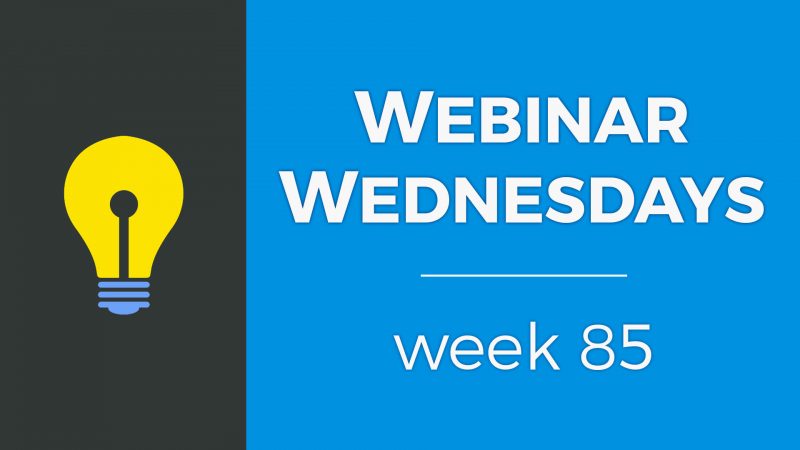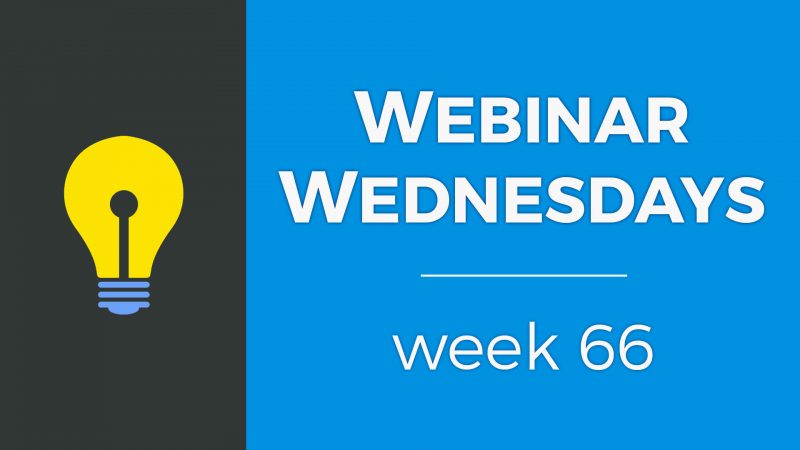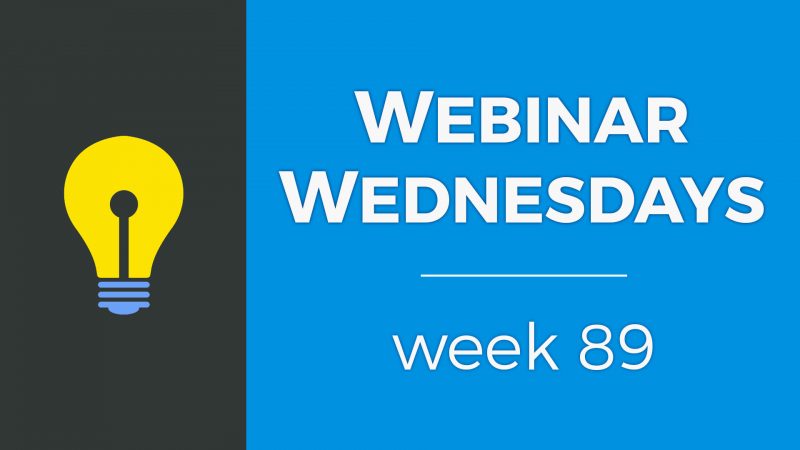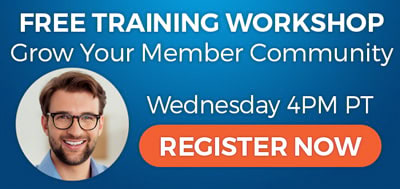
Key Topics:
- 1:49 – Forms: “Admin Only” Input View Option
- 4:57 – Design: Set Width of Main Website Logo
- 6:50 – Blogs: Current Date/Time Set as Default Publish Date
- 8:42 – API: Create Member Records from 3rd Party Sources – Automatically Create New Members From Google Form Submissions
- 9:40 – Total: 80+ Updates Pushed in August So Far
- 9:55 – Forms: Style “Website Address” fields in forms
- 10:46 – API: Bulk update member data (September)… Import member leads from other sources (September/October)
- 8:43 – Embed.ly: Paste links from 700+ solutions to embed content into webpages & posts – https://embed.ly
- 11:54 – How To Embed Videos, Podcasts, Magazines & More Into Your Membership Website
- 13:36- Tons More: Speed, security, quality-of-life features and exciting new releases on the way!
- 21:25 – Best Practices to Sell More Leads to Your Members
- 22:21 – What is a “Lead”?
- 23:14 – Types of Websites that Generate Leads
- 27:00 – Ways to Generate Leads
- 29:14 – How Cory Barnes Uses Facebook Groups To Grow His Membership Website
- 31:10 – Educating Your Visitors is Key!
- 35:45 – Educating Your Members is Key!
- 39:53 – Let’s See a Sample “About Our Service” Page
- 48:30 – Direct Leads vs. Indirect Leads
- 52:36 – Tips to reduce spam and non-serious leads
- 55:40 – Can conditional fields be used to automatically filter how leads get distributed to members?
- 58:26 – Add quick links to search results for specific locations? – How To Create Tag Clouds For Quick Links
- 1:02:41 – Create a portal-type navigation for your website? – Make Your Entire Website Members-Only Access
- 1:04:03 – DirectoryLocations.com
New Features
Coming Soon
Tip of the Week
Questions & Answers

 AI-Generated Transcript – Please excuse any inaccuracies
AI-Generated Transcript – Please excuse any inaccuracies
Forms: “Admin Only” Input View Option (00:01:49)
- The new feature related to forms allows admins to input data for members without giving them the ability to edit it, which is useful for sensitive information such as a broker’s license number (00:01:50).
- This feature is useful when the admin wants to input data for a member, but the member should not have access to change it themselves, and only the admin of the website would input and enter that data (00:01:55).
- The admin can choose to only input data that would show on the members’ profiles, and the member will not be able to edit this field, even when they are logged in and editing their own contact details (00:02:00).
- When the admin is logged in with the admin bar, they can see and edit the input field, but when they exit the admin view, the field is no longer visible to the member (00:02:44).
- The field will still be visible on the public listing, but the member will not be able to edit it, and this feature can be set up in the form manager, specifically in the members contact details form (00:03:36).
- To set up this feature, the admin can edit the form, add a new field, and toggle the cogwheel settings to display settings, where they can check the “admin only” box to restrict access to the field (00:04:17).
- The “admin only” feature allows only the admin to add data to the field when they click on the “visit website” link, making it a highly requested and valuable feature (00:04:41).
Design: Set Width of Main Website Logo (00:04:57)
- The design of a site can be affected by large website logos that are not recommended, and setting a maximum width for the logo can help it display properly on the front end of the website (00:04:57).
- A maximum width can be set for the main website logo in the general settings and branding images section, where a display width option is available, which is empty by default and uses the natural width and height of the image (00:05:41).
- The display width option allows users to set a specific width for the logo, and the height will be proportional to the width set, so adjusting the width will also adjust the height (00:06:10).
- To set a display width, users can enter a specific number, such as 200 or 100, and the logo will be adjusted accordingly, with the height auto-adjusting to maintain proportion (00:06:13).
- Setting an appropriate width for the logo is important, especially when uploading logos with too much height, as it allows users to adjust the width and have the height adjust proportionately (00:06:32).
- The display width option is self-explanatory and easy to use, allowing users to adjust the width of their logo and have the height adjust automatically to ensure proper display on the website (00:06:28).
Blogs: Current Date/Time Set as Default Publish Date (00:06:50)
- The issue of blog articles not showing up in search results due to a future publish date being set unintentionally has been a common problem, and to address this, the publish date will now be set to the current date and time by default when creating a blog article (00:06:50).
- This change aims to reduce user errors where the publish date is mistakenly set to a future date, causing the article to not appear in search results until the specified date is reached (00:07:01).
- The default publish date can still be adjusted to a future or past date as needed, but it will now automatically be set to the current date and time of the website, which is the desired setting for most users who want their articles published immediately (00:07:15).
- To demonstrate this change, logging in as a member with the ability to publish blog articles and navigating to the website’s blog articles section shows that the publish date is now pre-filled with the current date and time, matching the website’s general settings (00:08:01).
- If the publish date field is left unchanged, the article will be published immediately at the current date and time, which should prevent user errors and confusion about why articles are not appearing in search results (00:08:22).
- The article will only appear in search results once the publish date has been reached, as the intention is not to make it publicly available until that time (00:08:31).
API: Create Member Records from 3rd Party Sources (00:08:42)
- A significant update was introduced in a previous webinar, allowing the creation of member records from third-party sources, with a video available demonstrating how to use Google Forms for this purpose (00:08:44).
- This new feature enables the use of various third-party tools, including Jotform, Typeform (service), Zoho Forms, Microsoft Excel sheets, and Google Sheets, to create new member records on a website (00:08:57).
- A video showcasing how to utilize Google Forms to create member records is available and has been shared in the chat, with the recommendation to watch it, possibly at a faster speed to quickly get through the content (00:09:10).
- The month of August has seen significant activity, with the update being a key part of the developments so far (00:09:39).
Total: 80+ Updates Pushed in August So Far (00:09:40)
- A total of 80 updates have been pushed, with many being small patches and fixes, thanks to user feedback (00:09:41).
- The updates were made possible by users reaching out to the support team or mentioning issues in the Facebook group, and their contributions are greatly appreciated (00:09:49).
- Additional form-related updates are scheduled to be released soon, as announced in the recent updates (00:09:54).
Forms: Style “Website Address” fields in forms (00:09:55)
- The website URL or website address form field is available and when used, it displays the entire URL on the front end of the profile page (00:09:57).
- Settings are being created to customize the display view of website URL fields, allowing users to convert them into plain text or a button style, and choose the link text (00:10:09).
- The link text can be customized, for example, a WhatsApp link can be labeled as “click to my WhatsApp”, and the color of the button can be chosen from a selection of colors that correspond to the design settings (00:10:26).
- The chosen colors will match the buttons in the design settings, enabling the creation of more visually appealing URLs on members’ profile pages (00:10:31).
- These new settings are intended to improve the appearance of URLs from forms on members’ profile pages, making them more attractive and user-friendly (00:10:39).
API: Bulk update member data (September)… Import member leads from other sources (September/October) (00:10:46)
- The API will have updates that will be a recurring theme throughout the end of 2022, with the next update being the ability to bulk update member data, allowing users to update existing records in bulk using an Microsoft Excel sheet, which will be released sometime in September (00:10:46).
- The bulk update feature will enable users to update a bunch of members in their site using an Excel sheet, making it easier to manage member data (00:10:58).
- After the bulk update feature, the focus will shift to the ability to import member leads from other sources, such as Typeform (service) or Jotform, which support conditional fields, and can be embedded on other websites to gather leads (00:11:13).
- The import feature will allow users to gather leads on other websites and import them into their Brilliant Directories website, which can help lead generation sites multiply the number of leads they can generate online and sell or distribute to their members (00:11:34).
- The release date for the import feature is expected to be around September or October, which will provide users with more flexibility in managing their leads and member data (00:11:50).
How To Embed Videos, Podcasts, Magazines & More Into Your Membership Website (00:11:54)
- A new toolbar option called Embedly will be added to the text editor, allowing users to embed rich content and media into their web pages and posts, with over 700 connections to various solutions, including Twitter, Flickr, and Giffy, by simply pasting a link from any of these solutions into the text editor (00:11:59).
- The Embedly solution will be available to all BD websites by default, enabling users to embed content such as photo galleries, videos, audio, and slideshare into their web pages, landing pages, blog articles, and posts (00:12:07).
- An advanced setting will be available to allow members to use the Embedly feature in the text editors they have access to, providing more flexibility and control over the content that can be embedded (00:12:47).
- For users who need to embed content not available on the Embedly list, an older solution is still available, which can be used to embed videos, podcasts, magazines, and more into their membership website (00:13:07).
- A video is recommended as a resource for users who want to learn how to embed specific types of content, such as podcasts or online magazine embeds, and how to whitelist domains to be embedded into the text editor of their website (00:13:13).
Tons More: Speed, security, quality-of-life features and exciting new releases on the way! (00:13:36)
- There are numerous upcoming features, including speed, security, and quality-of-life improvements, thanks to suggestions from the community (00:13:36).
- The community’s input has been instrumental in shaping the development of these features, which are expected to enhance the overall user experience (00:13:40).
- Before proceeding to the next segment, an opportunity is given for attendees to ask questions or make comments about the recent updates, with a specific mention of Tim, who appears to be self-muted (00:13:55).
Which will have better performance… Embed.ly or normal iframe embeds? (00:13:59)
- The discussion revolves around the performance of Embed.ly versus normal iframe embeds, with a question about which method will have better performance in terms of page loading (00:14:00).
- When embedding content, there is usually a small page lag due to the fetching of data, but tools like Embed.ly are expected to handle this efficiently (00:14:39).
- A test can be conducted to compare the performance of Embed.ly and normal iframe embeds, using a Twitter embed or a YouTube video as an example, to see which one loads quicker (00:14:55).
- The goal is to ensure that things load quickly and efficiently, and a test, referred to as the “pepsi challenge”, can be done once the new feature is released (00:15:07).
- Jason and another participant, Stephen, are engaged in the discussion, with Stephen thanking Jason for the updates and preparing to ask his questions (00:15:15).
Use cases for Admin-Only form field input view option? (00:15:24)
- The admin-only input view option can be used in cases where the member has data on their profile that should not be changed, such as a license number, which the website owner has verified by taking the time to review a copy of their business license or other credentials, and this data is static and should not be altered by the member over time (00:15:29).
- This option can also be used to control data that the admin wants to keep exclusive, such as a website URL, which can be added to a member’s profile only by the admin, making it a privilege to have a company’s link on the profile page (00:16:18).
- The admin-only input view option is useful when the admin wants to reserve certain privileges for members who have reached a certain tier, made a one-off purchase, or paid for a digital service, and the admin will only enter the special data for the member if they have met these conditions (00:16:34).
Progress update on improving search results based on member service areas? (00:16:43)
- A progress update on improving search results based on member service areas is being discussed, with a goal of making it clearer why certain members are showing up in search results based on their service areas (00:16:43).
- The current search function can be confusing, as it may return results from other states if a member has service areas in those states, but it’s not clear to the user why those states are showing up (00:17:19).
- A new update was previously implemented to allow service areas to be shown on member profiles, but there is still work to be done to improve the search results (00:17:00).
- The team is working on a project to add better context to search results, so users can understand why a member is showing up in the results based on their service area (00:17:45).
- A feature request is made to allow admin-only users to embed a widget or short code on a member’s profile page, which could be used to display a lead form, reviews, or other types of embeds (00:18:06).
- The team will follow up on the project and see if it can be pushed up, as it would be valuable to add better context to search results based on service areas (00:17:48).
Suggestion to improve search result sort order logic (00:18:44)
- The issue with the search result sort order logic is that higher-tier members are prioritized over those who are closer to the searched location, even if they are not in the same city, which can be problematic for clients searching for specific locations (00:18:44).
- For example, if a client searches for Pasadena, California, the first four results may be from Los Angeles because they are higher-tier members, but this is not what the client is looking for (00:19:14).
- The current system does not allow clients to exclude higher-paid members who are not in the searched city, making it difficult to get a list of people who are closest to the searched location (00:19:31).
- One possible solution is to add a feature that allows clients to sort search results by distance without prioritizing higher-tier members, or to add a label to higher-tier members’ results, such as “recommended” or “sponsored” (00:20:01).
- This feature could be implemented as an advanced setting, allowing website owners to choose whether to prioritize higher-tier members or to prioritize search results by distance (00:20:43).
- The idea is to give website owners more control over the search result sort order logic, while also providing clients with more relevant search results (00:21:05).
- The proposed solution would omit search priority when a filter is used in the member search, allowing clients to get more accurate results (00:21:15).
Best Practices to Sell More Leads to Your Members (00:21:25)
- The topic of discussion is switching to best practices for selling leads to members, a subject that hasn’t been thoroughly covered, and David and Jason were discussing it earlier in the week (00:21:25).
- The focus of the discussion is not on the technical features of the directories platform, but rather on what members and website visitors are looking for on the website to create leads and for members to want to purchase them (00:21:42).
- The presentation aims to provide valuable insights and information on how to sell more leads to members, moving away from the technical side of things that were covered in previous tips of the week (00:22:00).
- David is taking over the presentation to go through some slides and discuss the best practices for selling leads to members, which is expected to be an amazing presentation (00:21:59).
- The goal is to provide a change of pace from the previous technical discussions, such as web hooks and API, and get back to on-site type of discussions that were done in the past (00:22:11).
What is a “Lead”? (00:22:21)
- A lead is defined as a person or thing that may be useful, especially if it’s a potential customer or a Business opportunity, and this concept is crucial to understand for those who are not utilizing leads or are unfamiliar with the term (00:22:23).
- Other terms that can be used to refer to leads include referrals, prospects, applicants, opportunities, and introductions, which all essentially describe a potential client or customer (00:22:40).
- In the context of a business directory, leads would be potential customers or clients for the businesses or professionals listed in the directory, who are offering their services (00:22:56).
- The concept of a lead is important for businesses or professionals who are members of a directory, as it refers to the potential clients or customers that they may be introduced to through the directory (00:23:03).
- Overall, a lead is a potential customer or business opportunity that may be useful, and understanding this concept is essential for businesses and professionals who want to utilize leads effectively (00:23:09).
Types of Websites that Generate Leads (00:23:14)
- Directory and membership websites generate revenue by selling leads, which are potential customers or clients, to their members, and this can be done by providing leads for free or selling them for a certain price (00:23:15).
- Types of websites that generate leads include business or service directories, such as attorney, doctor, or home repair directories, which provide new clients to their members (00:24:02).
- Leads can also take additional forms, such as real estate websites providing prospective property buyers and sellers to realtors or agencies, which is another example of generating leads (00:24:44).
- Classifieds websites, where members sell or list items for sale, and employment websites, such as LinkedIn or Indeed, which provide job applicants to employers, are also examples of lead generation (00:25:03).
- The goal of lead generation and distribution is to get information from potential customers or buyers and provide their contact information to members, who can then follow up to try to get their business (00:25:35).
- Many website owners, especially those starting a directory website, aim to sell leads to their members, but often fail to convince and compel visitors or professionals to use their website, which will be covered in the webinar (00:26:01).
- Examples of lead generation include an attorney directory providing new clients to attorney members, a doctor directory providing new clients to medical professional members, and a home repair directory providing new clients to contractors and service providers (00:24:11).
- The process of lead generation involves bringing potential buyers or clients to members, such as in the case of real estate websites, classifieds websites, or employment websites, and providing them with the contact information of potential customers (00:25:14).
Ways to Generate Leads (00:27:00)
- To generate leads, it is essential to find where desired leads or prospects spend their time online and make it clear that the website is a valuable resource for them, which can be achieved by creating content that appeals to the target audience, such as dog owners for a dog walker directory, and then getting that content in front of them (00:27:02).
- Another example of generating leads is through a real estate listings website, which can bring in potential buyers and sellers for realtor members by creating content related to home owning, home buying, or home selling, and then getting that content in front of the desired leads (00:27:43).
- Once the content is created, it can be promoted through various ways, including pay-per-click (PPC) or paid ads on platforms like Google, Microsoft Bing, or social media, to appeal to the desired leads and bring them to the website (00:28:22).
- It is crucial to identify where the desired leads spend their time online and pay for ads only on those platforms, such as Instagram for pet owners, to maximize the effectiveness of the advertising efforts (00:28:46).
- Social media is another great opportunity to generate leads, and it is essential to identify the right platforms where the target audience spends their time online and create content that appeals to them (00:29:08).
How Cory Barnes Uses Facebook Groups To Grow His Membership Website (00:29:14)
- Corey Barnes is a successful user of directories and has created a local business directory website that generates over six figures, and he utilizes Facebook groups to generate leads, which are then sent to professional members listed on his website (00:29:17).
- Corey Barnes’ strategy involves using Facebook groups to drive leads to his professional members, and this approach can be a creative way to utilize additional platforms to bring leads to a website (00:29:38).
- Targeted landing pages can be used in conjunction with pay-per-click (PPC) or paid ads to drive leads to a website, and these pages can be ranked organically in search results or used as a destination for paid ads (00:30:04).
- The targeted landing pages can provide valuable information to potential leads, such as pet owners, and showcase the resources and content available on the website, including a network of trustworthy and verified service providers (00:30:28).
- The use of targeted landing pages and clear calls-to-action (CTAs) on a website can help to make the purpose of the website clear and highlight the benefits of using the website’s resources, ultimately driving leads to become customers (00:31:01).
Educating Your Visitors is Key! (00:31:10)
- To maximize revenue and sell out leads, it is essential to educate visitors and members about the lead match service or process, and four key items to consider when educating visitors are trust, expectations, calls to action, and follow-up (00:31:10).
- Trust can be established by utilizing testimonials and social proof to show that many other visitors have found success in finding professionals through the verified network, and this can be achieved by marketing the network as a certified or verified network (00:32:12).
- Expectations can be set by making it clear that the website is an expert at matching visitors with qualified professionals, and that when visitors submit a quote request, they will be matched with a limited number of professionals, such as five, to avoid overwhelming them with too many options (00:32:43).
- Calls to action can be sprinkled throughout the website and ads, and can include mentions of the benefits of using the service, such as it being 100% free to get connected to professionals, and that visitors can compare quotes and skills of professionals to find the best fit for their needs (00:33:32).
- Follow-up is a crucial element that is often overlooked, but it is essential to follow up with visitors and ensure they are satisfied with the quality and quantity of professionals they were matched with, and to be open to feedback and suggestions to improve the service (00:34:05).
- The ultimate goal is to convince and compel visitors to fill out the lead form and provide leads to professional members, and this can be achieved by using testimonials, setting expectations, and having clear calls to action, such as “get matched now” or “request a quote now” (00:34:52).
- The calls to action should be prominent and drive people to take the desired action, such as filling out the lead form, and this can be achieved by making the call to action a big button on the main menu (00:35:34).
Educating Your Members is Key! (00:35:45)
- Educating members is key, and when it comes to trust, it is essential to ensure that the leads provided to members are legitimate and accurate, and that the information provided is trustworthy, especially if leads are being sold (00:35:46).
- Members need to know exactly what they will be paying for and what the process of purchasing and receiving leads is like, and they need to be aware of the business model, whether leads are being sold or provided for free, and what the expectations are (00:35:49).
- Follow-up is crucial for professional members, and it is essential to follow up with members after sending them leads, whether they purchase or accept the leads, to ensure they are satisfied with the quantity and quality of leads, and to be open to suggestions and issuing refunds or credits for bad leads (00:37:27).
- Having fair lead prices is vital, and prices should be calculated based on the industry being served, taking into consideration the potential member profit, average conversion rate of leads, and the value of each lead to members if they are able to capture the business (00:38:21).
- The business model of the website should be set up to ensure that members know what they are getting, and that the leads are legitimate, and that the prices are fair, and this can be achieved by educating members and providing them with accurate information (00:35:46).
Let’s See a Sample “About Our Service” Page (00:39:53)
- The lead matching service should be advertised to both members and visitors on the site, with consideration given to the cost of leads, as they are not a guarantee of a customer, and the goal is to make the cost not prohibitive for members to take the risk and chance of converting leads into customers (00:39:53).
- Brilliant Directories was built as a lead matching platform over 12 years ago, with the goal of selling leads to a particular market and industry, and was successful in doing so, with the use of the Wayback Machine tool to find archives of an older site, such as Interior Design Pro, which had good content that gave comfort to members about how the lead service works (00:40:32).
- The website had pages that explained the benefits of joining, such as maximizing online visibility, getting connected with new prospective clients, and having a full mini website, or profile page, where members could upload their portfolios, have links to their website and social media, and receive direct inquiries for free (00:41:10).
- Other perks mentioned included connecting and networking with fellow design professionals, improving rankings in search engines, and receiving training on how to market their interior design company, with the website acting as an industry advocate (00:42:06).
- The website had a service that matched consumers with interior designers, with verified client referrals, and the leads were verified through a process of calling the leads, getting their information, and making sure it was legitimate, which helped build trust with the designers and resulted in higher sell-through rates (00:42:54).
- The design of the page may be questionable, but the messaging is still compelling and convincing, with a focus on increasing online visibility, and the text is still relevant and effective (00:42:31).
- The goal of a website is to attract clients and provide verified leads to professionals, with a focus on transparency and building trust, by investing heavily in attracting clients and providing a platform for professionals to connect with potential customers (00:43:42).
- The website offers a range of benefits to professionals, including the ability to get notified whenever referrals come in, keeping 100% of their fees, and having access to valuable referrals with helpful tools, all while being charged only for the lead and not a commission of the project (00:44:16).
- The website has a page dedicated to frequently asked questions about leads, which provides full transparency to professionals about the lead services, including how leads are different from other sites, the cost of leads, and how many professionals can purchase a lead (00:45:10).
- The website offers a basic free listing and a pro listing, with the pro listing providing a discount on leads, and the cost of leads is determined by the type of listing, with a basic listing costing $24 per lead and a pro listing costing $12 per lead (00:46:16).
- The website addresses the issue of lead quality and the potential for complaints, by stating that leads are opportunities, not guarantees, to land new customers and clients, and that the website screens leads by calling them to ensure they are legitimate (00:47:03).
- The website limits the number of professionals who can purchase a lead to three, to prevent cannibalizing their opportunity to make a sale or pitch the client, and provides a range of tools and services to help professionals manage their referrals and connect with potential customers (00:45:51).
- The website’s lead services are designed to provide professionals with better tools, lower prices, and friendlier service, and to give them more opportunities to get more clients, with a focus on building trust and providing transparency (00:45:38).
Direct Leads vs. Indirect Leads (00:48:30)
- Direct leads are those that are submitted on the members’ profile pages, where a consumer can send a message or request a quote, and this can be customized to fit the needs of the business, such as changing the text to “request a quote” (00:48:35).
- The lead generation process can be facilitated through the use of landing pages, which can be designed to convince and compel consumers to take action, and can include features such as a form to request quotes, testimonials, and bullet points highlighting the benefits of the service (00:50:41).
- Indirect leads, on the other hand, come from landing pages and can be matched with members based on category or location, allowing consumers to fill out a form and get matched with qualified professionals (00:51:30).
- The lead generation theme is designed to push people to get free quotes, and can be customized to fit the needs of the business, including the addition of pages that explain the benefits of joining and how it works (00:50:06).
- The use of a lead generation theme and landing pages can help to establish authority and build trust with consumers, and can be an effective way to sell leads to members (00:52:13).
- The process of generating leads can be facilitated through the use of various tools and features, including a file upload add-on that allows consumers to upload images of their projects, and a text editor that allows for easy customization of pages (00:49:36).
Tips to reduce spam and non-serious leads (00:52:36)
- To reduce spam and non-serious leads, it is essential to filter out unwanted contacts, such as spammers or individuals looking for a job or customer service, as these are not revenue-generating and can be costly (00:52:49).
- One way to address this issue is to set a maximum number of lead inquiries per day in the lead settings, preventing a single person from filling out the lead form multiple times (00:53:50).
- Creating longer and more committal forms can also help to get more serious inquiries, as visitors will be more invested in filling out the form (00:54:18).
- Enabling and disabling specific fields in the form settings, such as location and category fields, can help to filter out non-serious leads and provide more valuable information for potential buyers (00:54:28).
- Adding more questions to the get matched form, such as asking for a website URL or specific details about the project, can help to separate legitimate inquiries from those who are just playing around with the forms (00:55:13).
- By making the form longer with good and valid questions, it is possible to dissuade people who are not serious about their inquiry and provide more valuable leads for potential buyers (00:55:26).
Can conditional fields be used to automatically filter how leads get distributed to members? (00:55:40)
- The idea of adding a simple question to filter leads, such as “are you interested in making a purchase from this place or looking to hire legal services,” is being considered to save time, with the possibility of using conditional fields to automatically filter leads (00:55:41).
- Manually matching leads is an option, especially if the volume of leads is not too high, allowing for vetting before they are presented to members (00:56:18).
- The ability to import leads into the directory software and use forms like Typeform (service) or Jotform, which allow for conditional fields, will be available in the future, enabling filtering based on lead answers (00:56:46).
- Currently, the system matches members based on location and category selected, but it does not check other answers, although these can be made public for members to decide if they want to purchase the lead (00:57:09).
- The possibility of using an external form with conditional fields to filter leads before they are added to the database is being considered, with an API import planned for September or October (00:57:52).
- The API will allow for more functionality and the use of other solutions, such as forms with conditional fields, to filter leads before they are added to the database (00:58:14).
Add quick links to search results for specific locations? (00:58:26)
- The discussion revolves around adding quick links to search results for specific locations, with the goal of making it easier for users to find their area, particularly in the context of six Texas regions: north, south, and west (00:58:29).
- To achieve this, the idea is to create a tag cloud, which is a cluster of links that can be placed in the sidebar or under the title, and use it to link to specific search results for each region, such as Dallas, Texas (00:59:52).
- The process involves searching for a specific location, copying the link, and using it to create a tag cloud with a link to the search results for that location, allowing users to easily find events and coupons in their area (01:00:40).
- The main menu link for events is “Support Local”, which includes both events and coupons, and it is suggested to add a menu item underneath “Events” to link to the search results for a specific location, such as Dallas (01:01:17).
- To organize the links, it is proposed to create separate menu pages for events and coupons, each with their own dropdown menu, allowing for a more structured and user-friendly approach (01:02:30).
- The idea is to use the tag cloud feature to create quick links to search results for specific locations, making it easier for users to navigate and find what they are looking for, and to use the “Support Local” menu as a starting point for this feature (01:01:20).
Create a portal-type navigation for your website? (01:02:41)
- Creating a portal-type navigation for a website involves setting up a members-only website with portals that allow users to click on specific options, such as events, and then choose from multiple boxes to navigate deeper into the site, similar to an app-like feel (01:02:42).
- To achieve this, it is recommended to watch a video that demonstrates how to create a portal navigation and get people more into the site, while ignoring the members-only part (01:03:01).
- The navigation process involves creating pages that give users boxes to click on, which then lead to search results and other relevant information, creating an app-like experience (01:03:16).
- When organizing content, it is suggested to start broad and then create quick links for popular areas as more content becomes available, such as organizing by city or county (01:03:32).
- The example of Texas is used to illustrate this point, with cities like Austin, Texas, Round Rock, and Waco, Texas being potential options for creating quick links (01:03:40).
- Kathy provided feedback on the idea, suggesting that starting broad and creating quick links for popular areas is a good approach (01:03:56).
DirectoryLocations.com (01:04:03)
- DirectoryLocations.com is a website where a plug-in is being developed to embed maps for listings and potentially for post types as well, allowing for features like full-width embeds and side-by-side split views on search results (01:04:15).
- The plug-in is not yet live, but it will enable users to show multiple locations and businesses on a single map, with various capabilities such as full-screen embedding on any page (01:04:41).
- The development team is open to suggestions and may add post-related features to the plug-in, and users can check the image gallery on DirectoryLocations.com for screenshots of the upcoming features (01:04:48).
- The webinar has gone over time, and the replay will be posted in the Facebook group, where users can also share their sites for feedback on what they might be missing to convince people to take action (01:05:32).
- Users are invited to join the Facebook group and share their sites for tips and feedback, and to subscribe to the YouTube channel for more updates and webinars (01:06:12).
- The Brilliant Directories family appreciates the users’ participation and looks forward to the next webinar in two weeks, with any questions or discussions to be continued in the Facebook group (01:06:24).

